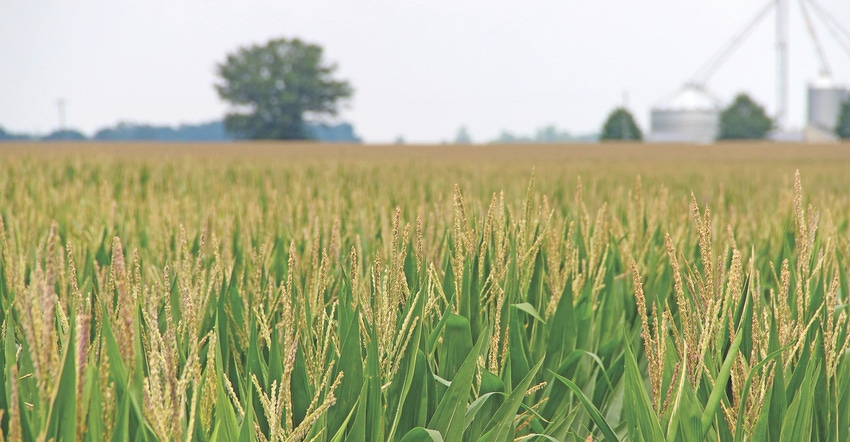
What are the key steps to producing a high-yielding and economical corn crop in 2022? It was a topic at the recent University of Arkansas System Division of Agriculture’s online Corn and Cotton Field Day. Jason Kelley, professor and Extension wheat and feed grains agronomist, along with Chuck Capps, corn and grain sorghum verification coordinator discussed what they saw in Arkansas corn production in 2021 and management practices that yield the best results in their research programs.
Getting corn started right
“Corn is one of those crops that it has to start off right, or in the end you’re going to be disappointed,” Kelley said. “How many times have you heard a thin soybean stand made a bumper crop? You don’t hear the same thing said about corn. Corn cannot overcome a thin stand.”
Getting a vigorous corn stand is the first step to success. Mid-March to mid-April is the recommended planting window in Arkansas, but Kelley and Capps stressed that growers should not let the calendar be the only guide if weather conditions are not favorable.
“Plant population is also very critical. 34,000 is where we maximize yields on most hybrids, but there are differences. There are some hybrids, the tall full-season hybrids where 34,000 is probably too many plants,” Kelley said.
There were numerous reports of green snap in Arkansas corn fields in 2021. Green snap, also known as brittle snap, is the breakage of corn stalks by violent winds. Many factors affect the severity of green snap injury, including growing conditions, soil type and hybrid genetics.
“There are some hybrids that have significant green snap problems,” Kelley said. “We need to look at picking out the one that’s going to withstand the windstorm. We may not get a storm every year, but it is good to have that insurance.”
While 2021 was an unusual weather year with a once in a century rain event, the threat of fall hurricane remnants is an annual concern. In addition to green snap tolerance, Kelley recommends selecting hybrids with tolerance for late season lodging.
“There are some things we really need to look for beyond price per bag and yield,” he added.
Fertility
In many corn fields nitrogen may be the largest input, particularly in 2022. Kelley and Capps discussed nitrogen application timings that maximize crop uptake efficiency in their research trials.
“We used 235 units of nitrogen for the year,” Capps said, describing the fertility protocol for the U of A Corn Verification location in Lonoke County in central Arkansas. “We applied 50 units upfront at planting. We followed that with a larger shot of nitrogen at the V6 stage, and finished up with 46 units applied pre-tassel.”
While 50 units at planting may not seem like enough, Kelley said research shows growers risk losing nitrogen when applying 80 to 100 units up front.
“We’ve got more data and have a better understanding of nitrogen management, especially during wet years,” he said. “If you put out 100 units at planting, it’s going to take 4 to 5 weeks for the corn to take up nitrogen and, in the meantime, if we get a big rain we’re going to lose some. This year we definitely lost some.”
They recommend applying 20-25% of nitrogen before planting, 50-65% of the nitrogen rate at sidedress between V6 and V8, then the remaining 15-25% as planned pre-tassel application — spreading units of nitrogen over three applications instead of two.
“This year that strategy is really going to pay off. If we had already put out all the nitrogen before the June rain, we would have run out at the end. As you drive around the state, we saw a lot of fields that visually ran out of nitrogen.”
A challenge to this strategy is having to put more nitrogen out at sidedress. Growers may get in a situation where two sidedress applications are needed.
“We’ve done two sideress applications ahead of a large rain to make sure we didn’t run out,” Capps said.
“In our environment we’re hedging against nitrogen loss,” Kelley added.
How do growers know if they had enough nitrogen, or if a pre-tassel application is needed? Tissue sampling takes out some of the guesswork.
Having ear leaf samples analyzed at V10 to V11 stage will let you know if your nutrients are good to go for the remainder of the season. University of Arkansas research recommends an additional 45 lbs of N if the tassel stage ear leaf plant tissue is less than 3%.
End of season stalk sampling will also give growers a better sense of their nitrogen management program. Stalk samples should be collected from similar location as leaf samples. Lab results will tell growers if nitrogen was a limiting factor, adequate or was in excess. This allows growers to plan for the following season.
Soil moisture sensors
With 90% of Arkansas’ corn crop on irrigated land, Kelley and Capps said soil moisture sensors are a good investment for the state’s producers.
“We’ve been able to implement a program with soil moisture sensors to help us time our irrigation. It’s been a great help in our program, and allowed us to cut back on a tremendous amount of irrigation by going by the actual subsoil water levels instead of just what date is on the calendar,” Capps said. “The sensors are taking more of the guesswork out and saving money in the longrun.”
About the Author(s)
You May Also Like






